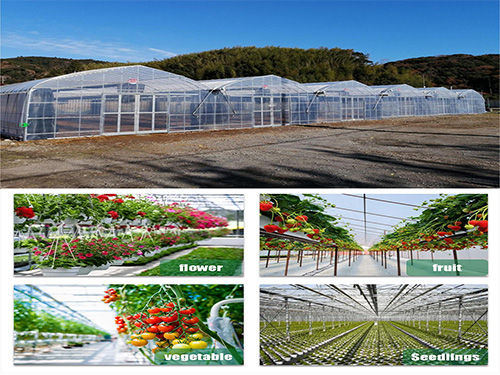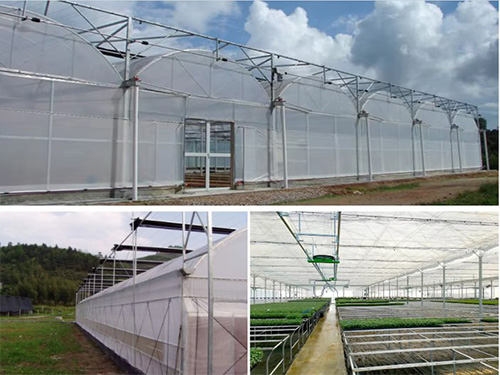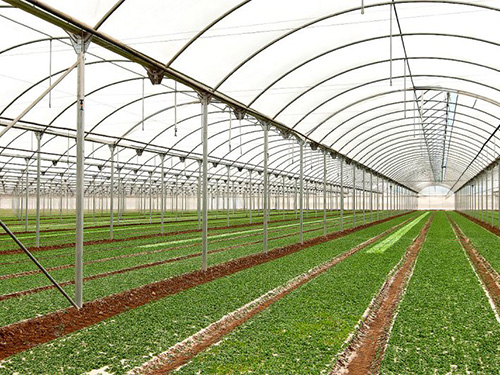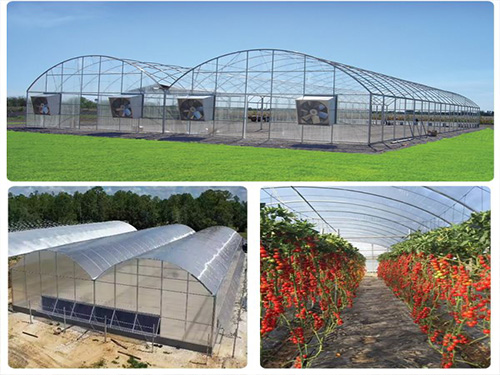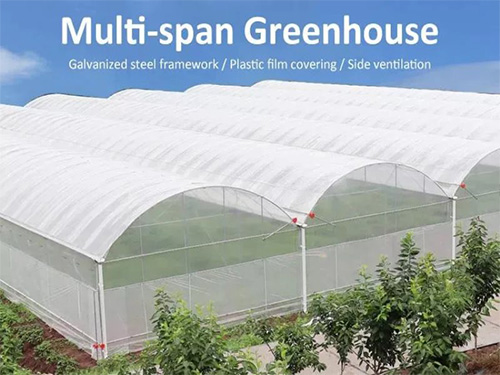NEWS DETAILS
NEWS INFORMATION
Polar Greenhouses: Growing Crops in Extreme Cold and Low Sunlight Conditions
AUTHOR:jyxd-greenhouse DATE:2025-03-06 20:21:39 HITS:171
Polar regions, characterized by extreme cold and low levels of sunlight, pose significant challenges for agriculture. However, innovative technologies have made it possible to grow crops in these harsh environments through the use of polar greenhouses. These specialized greenhouses are designed to provide a controlled environment that enables plant growth despite the surrounding freezing temperatures and limited daylight hours. This article explores how polar greenhouses are revolutionizing crop production in cold climates, their design features, and the strategies that make them effective for growing crops in extreme conditions.
1. The Challenges of Growing Crops in Polar Regions
The polar regions, including the Arctic and Antarctic, present several unique challenges for traditional farming. Some of the key obstacles include:
• Extreme Cold: Freezing temperatures can cause plant damage, hinder germination, and prevent crop growth entirely if not properly controlled.
• Limited Sunlight: During the winter months, these regions experience polar nights, where sunlight is almost nonexistent for extended periods, making it difficult for crops to photosynthesize and grow naturally.
• Short Growing Seasons: The limited growing season in polar regions, especially in the Arctic, further complicates traditional agriculture, as crops need to mature within a very brief window of time.
Despite these challenges, polar greenhouses leverage advanced technology to overcome these environmental constraints and allow for sustainable crop production.
2. Key Features of Polar Greenhouses
Polar greenhouses are specially designed to create a warm, stable, and light-controlled environment, even in the most extreme cold climates. Key features of these greenhouses include:
Insulation and Energy Efficiency
Insulation is critical in polar greenhouses to retain heat and minimize energy use. Greenhouses in these regions typically use materials with high insulating properties, such as double-glazed polycarbonate panels or advanced thermal curtains. These materials trap heat inside the greenhouse, ensuring that plants stay warm even during subzero temperatures.
Solar Heating Systems
Polar greenhouses often incorporate solar heating systems, taking advantage of the limited sunlight available. Solar panels installed on the greenhouse roof or surrounding area can absorb and store sunlight, converting it into heat energy. This energy is then used to warm the greenhouse and extend the growing season, ensuring plants receive adequate warmth for optimal growth.
Artificial Lighting
To address the challenge of low sunlight, polar greenhouses rely on artificial lighting systems that simulate the natural sunlight needed for photosynthesis. LED grow lights are commonly used, as they are energy-efficient and can provide the specific light spectrum that plants need to thrive. These lights are programmed to ensure crops receive sufficient light during the dark winter months, helping to promote healthy growth and development.
Temperature Control Systems
In addition to solar heating, polar greenhouses are equipped with sophisticated temperature control systems that maintain a consistent internal environment. These systems regulate the temperature and prevent extreme fluctuations that could harm plants. In some cases, geothermal energy is utilized to provide a steady, renewable source of warmth to support crop growth.
Automated Irrigation and Nutrient Systems
In polar greenhouses, efficient irrigation is crucial to ensure that crops receive the right amount of water, especially during the colder months when evaporation rates are low. Automated irrigation systems, such as drip irrigation, deliver water directly to plant roots, minimizing waste and maximizing efficiency. Additionally, nutrient delivery systems can provide plants with essential nutrients in a controlled manner, promoting optimal growth in harsh conditions.
3. Types of Crops Grown in Polar Greenhouses
While polar greenhouses provide an ideal environment for a variety of crops, certain plants are particularly well-suited to the controlled conditions found in these greenhouses. These include:
• Leafy Greens: Crops such as lettuce, spinach, and kale are ideal for polar greenhouses due to their relatively short growing cycles and ability to thrive in cooler temperatures.
• Herbs: Many herbs, including basil, mint, and parsley, grow well in the controlled environment of polar greenhouses, where they can be harvested year-round.
• Root Vegetables: Carrots, radishes, and beets are among the root vegetables that can be successfully cultivated in polar greenhouses, benefiting from the stable conditions provided by greenhouse technology.
• Tomatoes and Peppers: With the help of artificial lighting and temperature control systems, more temperature-sensitive crops such as tomatoes and peppers can also be grown in polar greenhouses, providing fresh produce in otherwise inhospitable regions.
These crops can be grown year-round, regardless of the surrounding environmental conditions, providing a reliable source of food in remote or Arctic areas.
4. The Benefits of Polar Greenhouses
The use of polar greenhouses offers numerous benefits, both for local communities and for global food security:
Food Security in Remote Areas
Polar greenhouses are particularly beneficial for remote communities, such as those in the Arctic or Antarctic regions, where traditional farming methods are not feasible. By growing crops in a controlled greenhouse environment, these communities can reduce their reliance on imported food and ensure a steady, sustainable source of fresh produce throughout the year.
Sustainability and Environmental Impact
By using renewable energy sources, such as solar power and geothermal energy, polar greenhouses contribute to sustainable agriculture. They minimize the carbon footprint of food production in extreme climates by reducing the need for transportation and greenhouse gas emissions associated with importing food.
Reduced Dependence on External Resources
Polar greenhouses help reduce the dependence on external resources, such as food imports or fossil fuels, which are often expensive and logistically challenging to supply in remote regions. This self-sufficiency fosters greater resilience in polar communities and can be a key factor in long-term sustainability.
5. Future of Polar Greenhouses
The future of polar greenhouses looks promising, as advances in technology and energy efficiency continue to improve the viability of farming in extreme cold climates. As climate change accelerates, polar regions may become more suitable for year-round food production, and polar greenhouses could play a pivotal role in ensuring food security in increasingly inhospitable regions.
Additionally, with ongoing research and development, polar greenhouses may expand beyond food production to include research on sustainable farming techniques, plant adaptation to extreme environments, and even the potential for off-world agriculture in space.
Conclusion
Polar greenhouses offer a sustainable solution for growing crops in extreme cold and low sunlight conditions. With the integration of advanced technologies such as solar heating, artificial lighting, and efficient temperature control systems, polar greenhouses enable year-round food production in some of the most challenging environments on Earth. These greenhouses not only contribute to food security in remote regions but also support global sustainability efforts by reducing reliance on food imports and minimizing environmental impact. As technological advancements continue, the potential for polar greenhouses to revolutionize agriculture in cold climates—and beyond—becomes increasingly exciting.
Would you like more information on the latest innovations in polar greenhouse technologies or how to set up one in your region?
Hebei Juyou Xinda Greenhouse Facilities Co.,Ltd.
Copyright © 2024-2025 https://www.jyxd-greenhouse.com. All Rights Reserved Hebei Juyou Xinda Greenhouse Facilities Co.,Ltd.Copyright






 Current Location:
Current Location:


